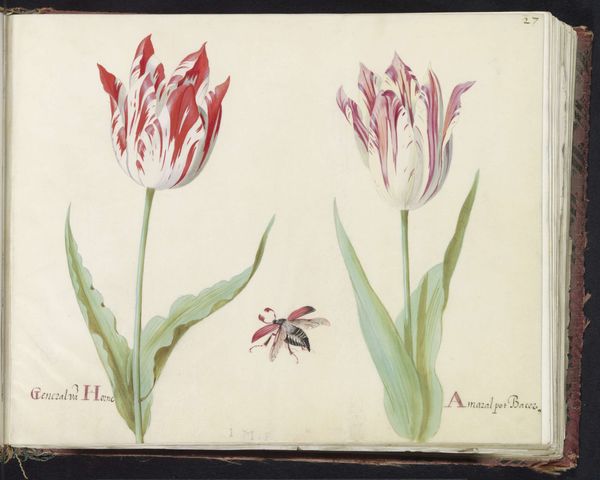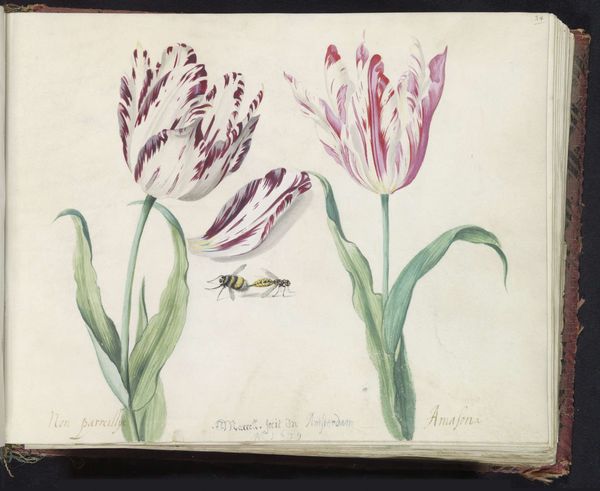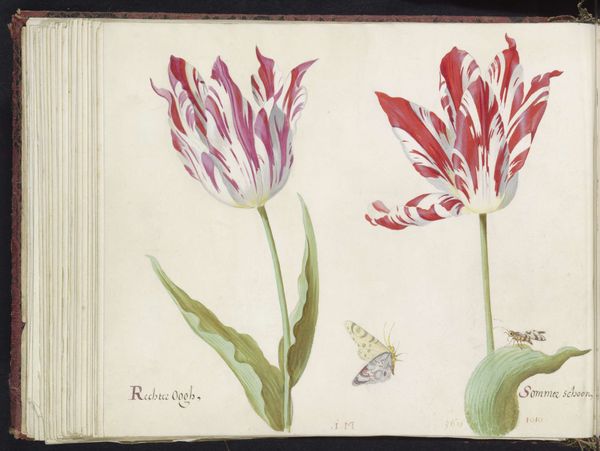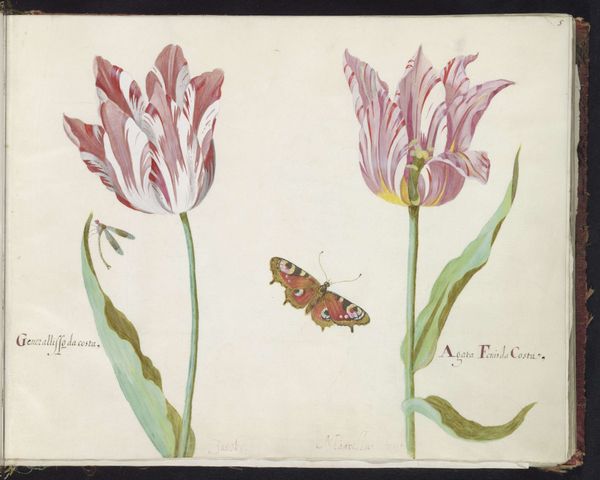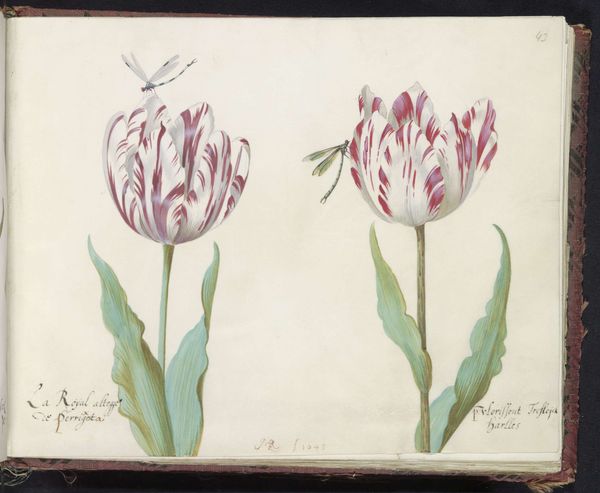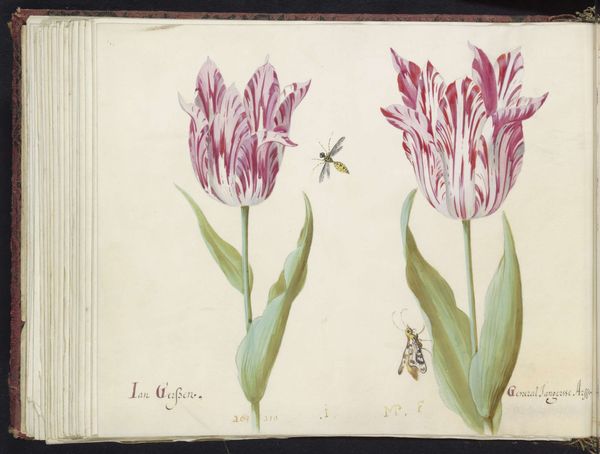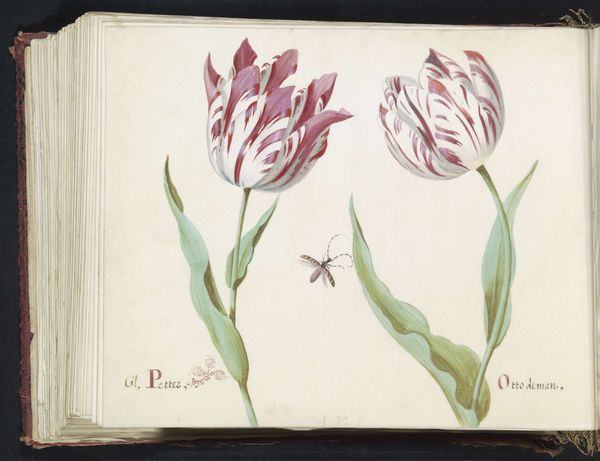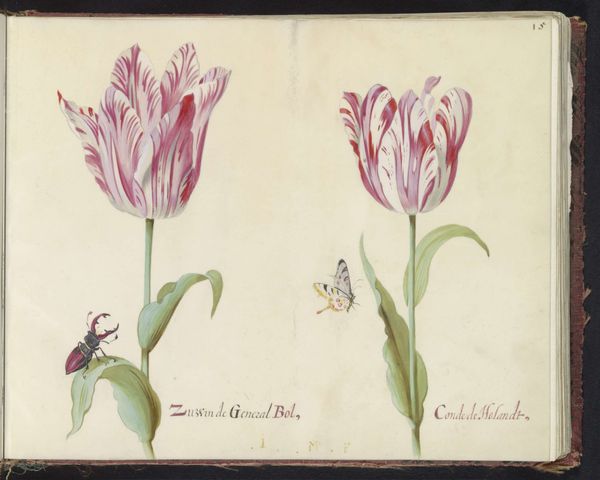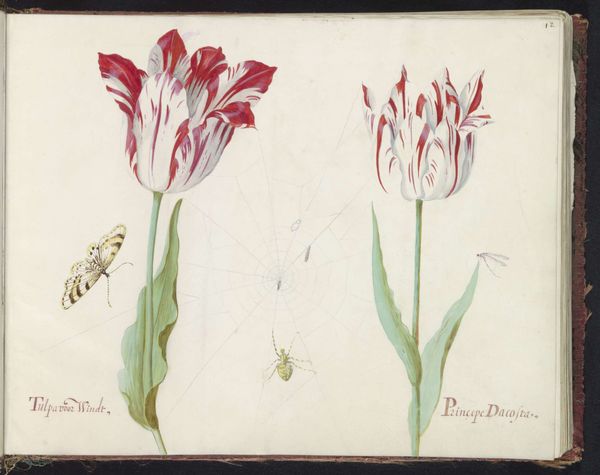
tempera, painting, watercolor
#
baroque
#
tempera
#
dutch-golden-age
#
painting
#
watercolor
#
watercolour illustration
#
botanical art
#
watercolor
Dimensions: height 265 mm, width 335 mm
Copyright: Rijks Museum: Open Domain
Curator: It feels so delicate. A whisper of color on creamy paper, wouldn't you agree? Editor: It certainly does. We are looking at a botanical study: *Twee tulpen met aardbeien en slak* or *Two Tulips with Strawberries and Snail*. It’s an artwork created around 1637 by Jacob Marrel. It's executed in tempera and watercolor and is part of the Rijksmuseum collection. Curator: A snail...and strawberries. Such an evocative pairing. Tell me, what emotional undercurrent do you detect here? For me, the snail, especially, carries a symbolic weight. It makes me think of slow passage of time... of seasons changing. The transient beauty. Editor: I am interested in Marrel's specific choices of materials and production. What makes a watercolor painting, a record, so highly valued when the "subject" itself – these natural forms—were part of the landscape? Who controlled access to pigments or supported Marrel in pursuing his technique, time, and labor, to create a rendering of tulips and berries? What type of paper did he use? Curator: True, true, though for me, the charm of such botanic artworks lies also in the long association of flowers and mortality—they serve as _memento mori_, especially popular during this Dutch Golden Age. This book format lends itself to the theme—a quiet memorial. And strawberries too—their fleeting season speaks to fragile life. Editor: Yet isn't that relationship between flowers and mortality also cultivated? The book itself—the organized dissemination of botanical knowledge—participates in larger trade networks, creating markets around specimens of nature, shaping a particular taste. Here, we see the start of capital entering our very idea of beauty and our emotions associated with such beauty. Curator: The tulips themselves also offer layers of symbolic value—the shape of their petals and coloration speaking to notions of abundance and perhaps hidden luxury, tulip bulbs being precious then. A small status marker that invites interpretation. Editor: Interesting. But even those "hidden luxuries" weren't naturally there—it came from specific, technical modes of cultivating those tulips to become something more marketable or "beautiful," as you say. Curator: I suppose, thinking about this painting together with you makes me re-appreciate that such detailed images can bridge our material understanding with deeper cultural meanings. Editor: Yes, from here, I have the desire to investigate more of this artist's production, but also of those working with him – seeing both hands shaping our visual world!
Comments
No comments
Be the first to comment and join the conversation on the ultimate creative platform.


